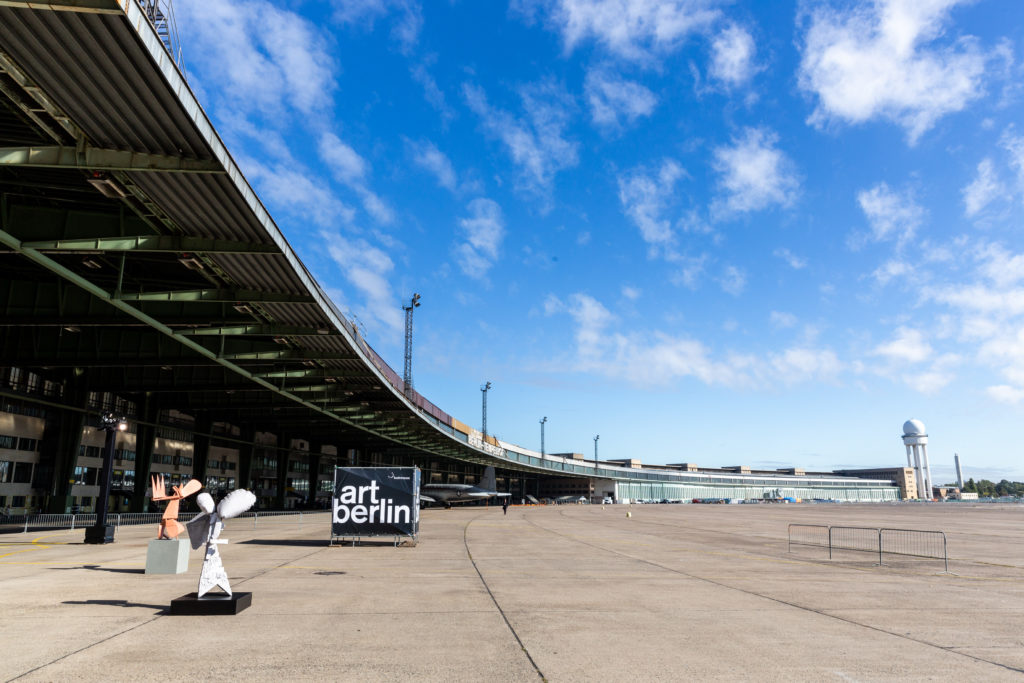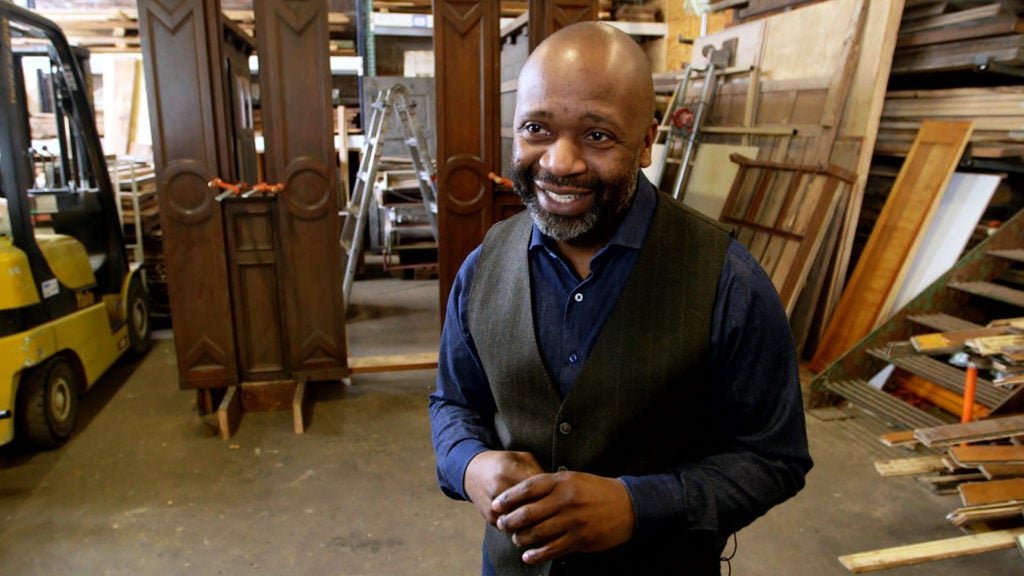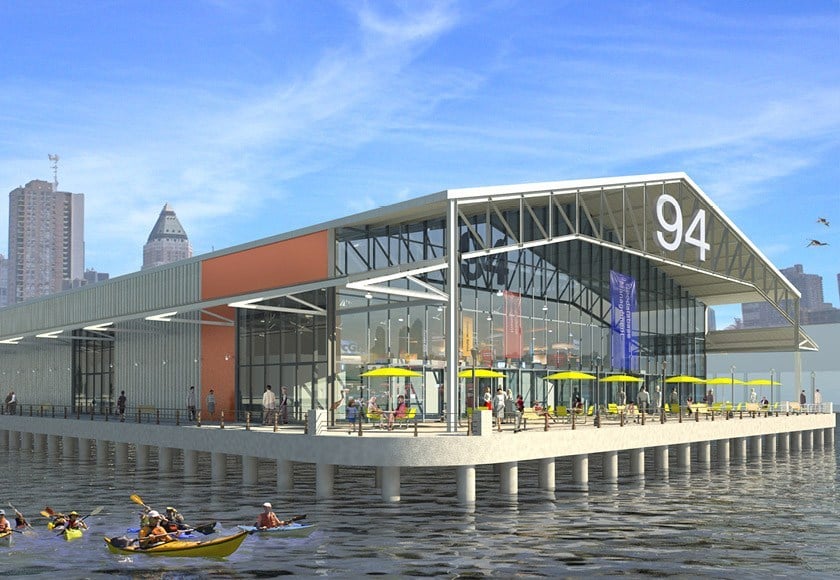Opinion
The Gray Market: Why the End of Art Berlin Reveals a Weakness in All Art Fairs (and Other Insights)
Our columnist unpacks the ways that real estate is just as important to trade fairs as to their exhibiting galleries.

Our columnist unpacks the ways that real estate is just as important to trade fairs as to their exhibiting galleries.

Tim Schneider

Every Monday morning, Artnet News brings you The Gray Market. The column decodes important stories from the previous week—and offers unparalleled insight into the inner workings of the art industry in the process.
This week, a case where the cure can’t be separated from the malady…
On Wednesday, my colleague Kate Brown relayed the news that Art Berlin (formerly known as Art Berlin Contemporary), the German capital’s premier trade fair for art of the present and recent past, is no more. Representatives of Koelnmesse, the fair’s organizer, said that the company felt it could no longer guarantee that future editions of the event would meet its standards. As a result, Koelnmesse will shutter Art Berlin and refocus its efforts on the other trade fair in its portfolio, Art Cologne.
So what happened? According to Brown, three factors were to blame. The first (and undoubtedly the most important) was the disappointing amount of revenue earned from previous editions. Tied to this, Brown also cites sources close to the fair emphasizing that Art Berlin “received no support from the state or city,” unlike similarly sized European fairs including Vienna Contemporary and ARCO Madrid.
But the third factor may have hit the fair’s clientele—namely, its galleries—closest to home: real-estate trouble. Although Art Berlin set up shop inside the decommissioned Tempelhof airport for its past three editions, Brown relays that the fair’s organizers only managed to lock in the venue “at the last minute” in 2019, and strictly for that year alone.
Anyone even passingly familiar with real estate in the city won’t exactly be knocked out of their chairs by Art Berlin’s situation. Rents in Berlin have doubled over the course of the past decade, and property consultancy Knight Frank found that the city’s real estate prices rose more sharply than any on Earth in 2017, with costs leaping 20.5 percent compared to the previous year. At this point, Berlin’s famous club scene is as essential for keeping a roof over people’s heads at night as it is for good-natured depravity.
But the real lesson here is about more than just one fair, or even one city. It’s about a larger, more troubling reality in the sector: although art fairs evolved specifically to try to help fixed-location galleries contend in an increasingly global and nomadic market, they are still vulnerable to some of the exact same problems they were designed to solve.

Production still from the Art21 “Extended Play” film, “Theaster Gates: Collecting.” © Art21, Inc. 2017.
Provided a hypnotist hasn’t just snapped you out of a generation-long trance, you already know that running a traditional gallery is a maddeningly expensive and risky proposition. It’s especially true now that the art market is increasingly morphing into the same barbell shape as the buyer base in developed countries: a high-value concentration at the top, a low-value concentration at the bottom, and only a thin connection running between them.
With more of the world’s wealth shared among fewer people over a greater geographical spread, it’s harder and harder for any gallery moored in one place (or even two or three) to meet, let alone consistently strike deals with, enough rich people to keep its business afloat.
Enter: art fairs. On the most transactional level, art-fair organizers justify the high prices charged to exhibitors by touting the quantity and geographical breadth of collectors, curators, and other art-world players who visit their events. Exhibit at an art fair outside your home base, the pitch goes, and your gallery’s fortunes could change dramatically.
Fair organizers understand the value proposition here—and recent, modest equitability initiatives aside, dealers pay a premium for it. It’s a brutal calculus that always makes me think of this indelible quote from artist and self-proclaimed “hustler” Theaster Gates in a 2014 New Yorker profile:
“I’m the hustler who’s just willing to admit this is all a fucking hustle—like, you think that Basel Miami isn’t a fucking hustle? For 125 square feet we got to pay $75,000. It’s five-day real estate!”
But it’s short-term real estate for the fair organizers, too. That means they’re just as susceptible to property-market tremors as the galleries that make up their client base. And this quake is being felt by fairs beyond just Art Berlin.

Dattner Architects, rendering of proposed renovations of Piers 92 and 94. Image courtesy of Dattner Architects.
A quick survey of the fair landscape reveals a plethora of location-based problems. Last year, structural deficiencies at New York’s Pier 92 forced the Armory Show to move dozens of its exhibitors—and its sister fair, Volta, to completely relocate—a week before opening. Extensive renovations at the Grand Palais will push FIAC, the Parisian fair whose rise has been powered at least in part by its residence in that adored Beaux-Arts building, to an alternate venue on the Champ-de-Mars until at least 2024.
For its fairs in London, New York, and Los Angeles, Frieze counters its chosen cities’ respective challenges in property availability, cost, and customizability by purpose-building architecturally optimized tents… which have, nevertheless, at various points in the past, overheated in unseasonable warmth or leaked in especially punishing rain.
Even Art Basel has suffered some location-based agita. From 2015 until late 2018, Art Basel Miami Beach had to work around a colossal renovation of its longtime venue, the Miami Beach Convention Center. (In 2017, the construction work memorably led to staffers transporting VIPs around the building’s exterior in golf carts.) Uncertainty also swirls around the 2020 edition of Art Basel Hong Kong due to six months of ongoing protests that have sometimes erupted into violence between police and demonstrators. (Art Basel officials say the fair will go on as planned.)
Obviously, these problems are not all exactly alike. But they all stem from the fact that fairs, like galleries, ultimately depend on occupying very particular tracts of real estate. Whether the specific issue is rents rising faster than revenues, an uncomfortable environment inside the venue, or an unacceptable risk in even traveling to the metropolitan area the fair calls home, a fair’s need to occupy specific property can quickly cascade into an existential problem—less a ripple effect from buyers to exhibitors to organizers, and more a riptide threatening to pull everyone underwater together.
Would losing the Tempelhof airport have been fatal to Art Berlin had its parent company made more money from recent editions? Would it have lost Tempelhof at all if the fair had a more robust rental budget? We’ll never know. But one way or another, the tension between cash and real estate snapped Art Berlin into oblivion. And gallerists all over the world should keep that in mind when they look to art fairs to relieve the same tension in their day-to-day operations.
That’s all for this week—and this year, at least on the usual schedule. The Gray Market won’t appear on either of the next two Mondays, but my annual evaluation of my start-of-year predictions will land just after Christmas, and my predictions for 2020 will hit just after New Year’s.
‘Til then, remember: changing scenery doesn’t necessarily change anything else.